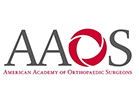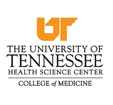Comparison of Outcomes Between Modular Dual Mobility and Conventional Hip Implants in Primary, Elective Total Hip Arthroplasty
Modular dual mobility designs (MDM) are designed to reduce the risk of postoperative dislocations following primary total hip arthroplasty (THA). This study investigated both the usage and outcomes (ie, patient-reported outcomes and complications) associated with MDM hips compared with conventional implant designs.
Groundbreaking Five-Year Study Confirms Stability of the Novel Reverse Hip Replacement System (Reverse HRS) Design
This novel reverse total hip arthroplasty (RTHA) design has been developed with enhanced mechanical stability at extremes of motion by reversing the articulating surfaces using a femoral cup and acetabular ball. The purpose of this study was to assess the implant-bone fixation using radiostereometric analysis (RSA), assess the linear wear of the cross-linked polyethylene insert and monitor the clinical safety and efficacy of this novel design.
Meniscal Tear Repair: What’s New in the Literature?
Meniscal tear repair has become the gold standard modality for treating different types of meniscal tears. Despite the availability of numerous repair techniques, the ideal approach remains unclear, especially for complex and irreparable tears. Recently, innovative techniques have emerged to address these challenges, including hybrid/salvage techniques, meniscal scaffolds, and the introduction of biologics as part of the treatment.
Traumatic Versus Atraumatic Causes of Shoulder Impingement Syndrome: A Systematic Review of Pathophysiology and Outcomes
Shoulder impingement syndrome (SIS) is a common musculoskeletal disorder caused by traumatic or atraumatic factors, resulting in pain, functional limitation, and reduced quality of life. This systematic review aimed to summarize the pathophysiology, anatomical changes, and functional outcomes of traumatic versus atraumatic SIS.
What Causes Infraspinatus Pain and How Can You Treat It?
The infraspinatus muscle works alongside three other rotator cuff muscles to stabilize and move the shoulder. This triangular-shaped structure primarily externally rotates the arm. This means it rotates the arm toward the outside of the body. It also assists with moving the scapula (shoulder blade) when your shoulder joint is fixed (not moving). Occasionally, repetitive movements or other disorders can cause pain in this muscle.
-
Dickson
-
ONEC1TY - Nashville






